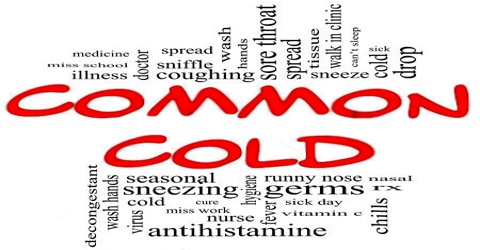About Common Cold
Definition
Common cold is a respiratory infection caused by any of several viruses, such as adenovirus or rhinovirus, in which the mucous membranes of the mouth, nose, and throat become inflamed. Common-cold symptoms include fever, nasal discharge, sneezing, and coughing. More than 200 different types of viruses are known to cause the common cold, with rhinovirus causing approximately 10%-40% of all adult colds.

Colds, sometimes called rhinovirus or coronavirus infections, are the most common illness to strike any part of the body. It is estimated that the average person has more than 50 colds during a lifetime. The common cold is the most frequently occurring disease in the world, and it is a leading cause of doctor visits and missed days from school and work. The average adult gets two to four colds a year, while the average child may get six to eight. They occur more commonly during the winter. These infections have been with humanity since ancient times.
There is no vaccine for the common cold. The primary methods of prevention are hand washing; not touching the eyes, nose or mouth with unwashed hands; and staying away from other sick people. Some evidence supports the use of face masks. No cure for the common cold exists, but the symptoms can be treated.
Signs, Symptoms and Causes of Common Cold
Symptoms of a common cold usually appear one to three days after exposure to a cold-causing virus. Signs and symptoms, which can vary from person to person, might include:
- Runny or stuffy nose
- Sore throat
- Cough
- Congestion
- Slight body aches or a mild headache
- Sneezing
- Low-grade fever
- Generally feeling unwell (malaise)

The signs and symptoms of the common cold in infants and children are similar to those seen in adults. The cold may begin with a runny nose with clear nasal discharge, which later may become yellowish or greenish in color. Infants and children may also become more fussy and have decreased appetite.
Common cold can be caused by more than 200 different viruses. Up to 50% of colds are caused by rhinoviruses, other cold-causing viruses include:
- Human parainfluenza virus
- Metapneumovirus
- Coronavriuses adenovirus
- Human respiratory syncytial virus
When a virus manages to overpower the body’s immune system, infection occurs. The first line of defense is mucus, which is produced in the nose and throat by the mucus glands. This mucus traps anything inhaled, such as dust, viruses and bacteria. Mucus is a slippery fluid that the membranes of the nose, mouth, throat and vagina produce.

Diagnosis, Treatment and Prevention of Common Cold
Colds are diagnosed by observing a person’s symptoms. There are no laboratory tests readily available to detect the cold virus. However, a doctor may do a throat culture or blood test to rule out a secondary infection. There is no real way of treating or curing the common cold, the following measures may help ease the symptoms:
- Drink plenty of fluids and keep well hydrated, being dehydrated when infected with a cold can make you feel worse.
- Get plenty of bed rest; it is important to get as much sleep/rest as possible when infected as the body’s immune system is fighting off the virus.
- Take aspirin, paracetamol or ibuprofen to relieve headache or fever. Do not give aspirin to children under the age of 16.
- Some people find that inhaling steam helps ease the symptoms of nasal congestion.
Prevention focuses on strengthening the immune system by eating a healthy diet low in sugars and high in fresh fruits and vegetables, practicing meditation to reduce stress, and getting regular moderate exercise. Colds are very minor, but they are inconvenient and can certainly be miserable. There are some steps individuals can take to reduce their spread. These include:

- Washing hands well and frequently, especially after touching the nose or before handling food
- Covering the mouth and nose when sneezing
- Disposing of used tissues properly
- Avoiding close contact with someone who has a cold during the first two to four days of their infection
- Not sharing food, eating utensils, or cups with anyone
- Avoiding crowded places where cold germs can spread
- Eating a healthy diet and getting adequate sleep
Zinc supplements may help to reduce the frequency of colds. Gargling with water was found useful in one small trial.
Reference: thefreedictionary.com, medicalnewstoday.com, dictionary.com, mayoclinic.org, wikipedia.
















